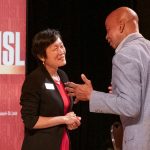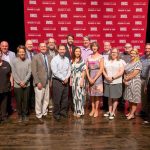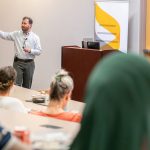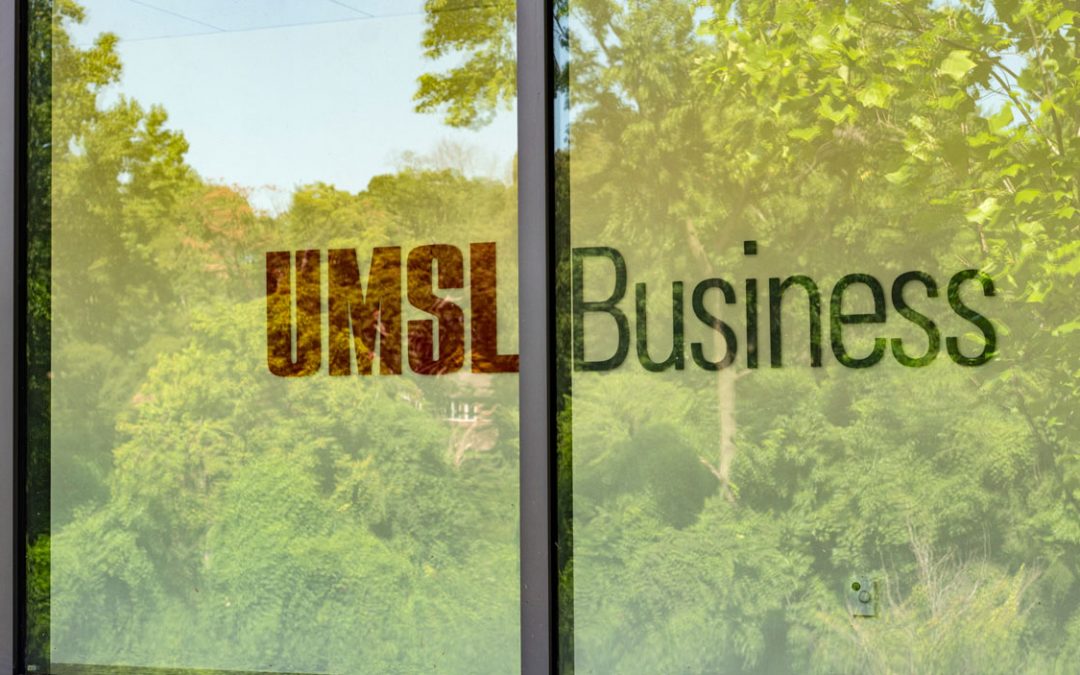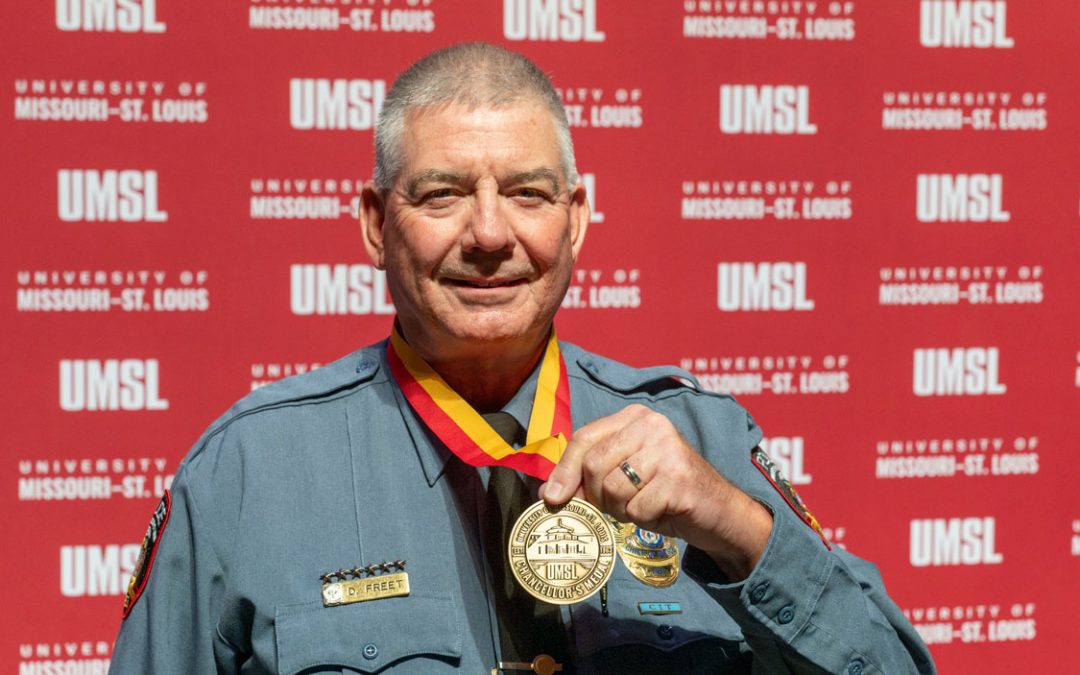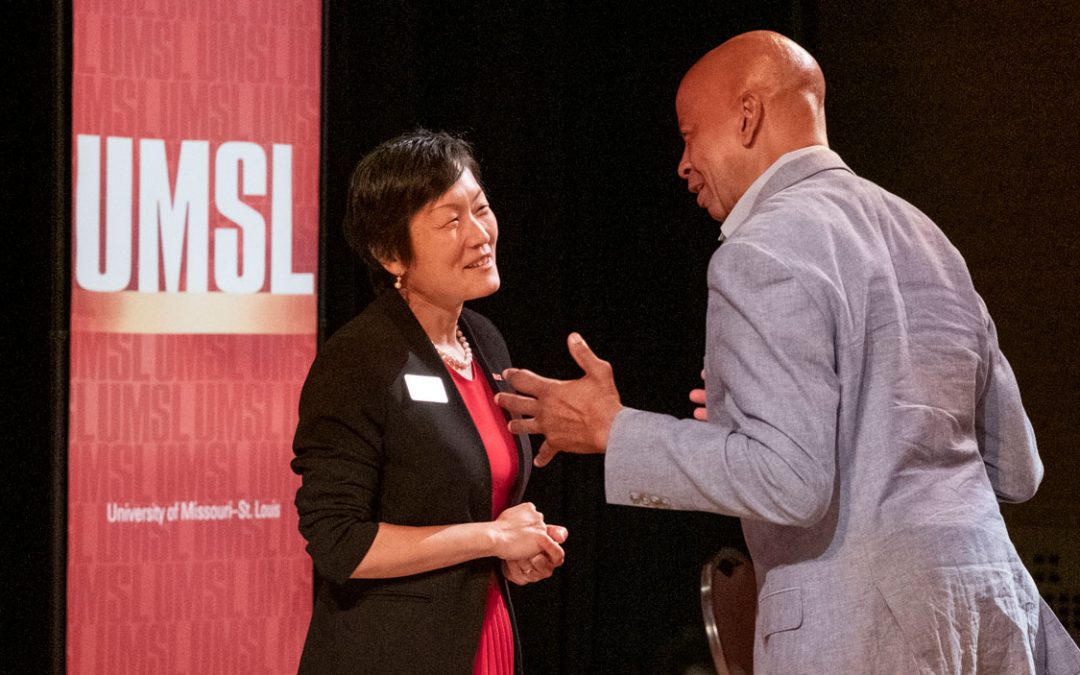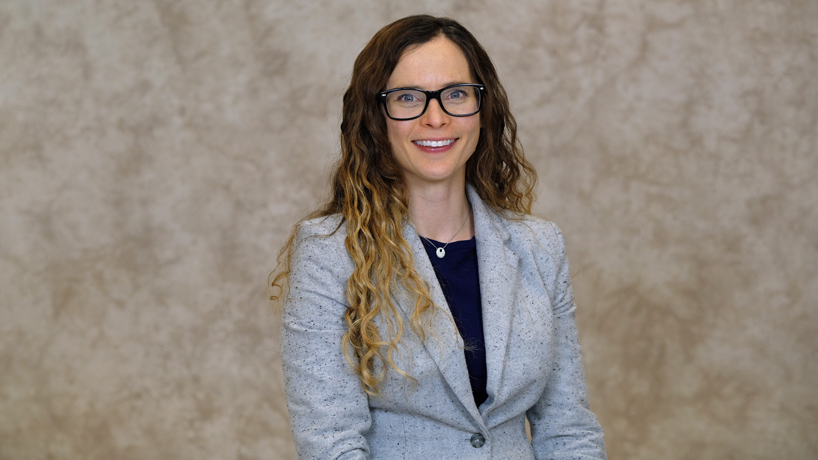
Rachel Wamser-Nanney, an associate professor of psychological sciences at UMSL, has clinical expertise in treating trauma-related symptoms, particularly post-traumatic stress disorder. Much of her recent research has focused on gun violence. (Photo by August Jennewein)
In the years surrounding her doctoral program, Rachel Wamser-Nanney consistently landed in communities plagued by high rates of homicide and gun violence.
 From St. Louis to New Orleans then Detroit, she settled in cities to study topics related to traumatic stress, but all too often she would hear stories of armed violence that would shift her focus. Her experience was punctuated by the story of 4-year-old brought in for clinical treatment after being struck by a bullet intended for the toddler’s mother.
From St. Louis to New Orleans then Detroit, she settled in cities to study topics related to traumatic stress, but all too often she would hear stories of armed violence that would shift her focus. Her experience was punctuated by the story of 4-year-old brought in for clinical treatment after being struck by a bullet intended for the toddler’s mother.
When asked about best treatment options for the child, Wamser-Nanney began digging for literature that might offer insights. Her search offered limited results.
Now an assistant professor at the University of Missouri–St. Louis, Wamser-Nanney says many research questions remain about gun violence, ranging from prevention efforts to effective trauma-focused treatment.
In the wake of the shooting last month at Marjory Stoneman Douglas High School in Parkland, Florida, UMSL Daily spoke to Wamser-Nanney about childhood trauma and areas in which gun violence research can improve.
What are you discovering about the impact of gun violence from your research?
Right now, I have a study looking at the role trauma exposure, traumatic events and PTSD symptoms have on beliefs about guns. What we are seeing is that PTSD symptoms – at least in a predominantly undergraduate sample – are less related to more positive perceptions about guns, but certain trauma types are. If you were specifically assaulted with a gun, you have more pro-gun beliefs. You think that guns help protect you from crime and that everyone should have a gun to keep themself safe.
If you had a non-armed physical assault, that doesn’t correspond to more positive gun beliefs. Similarly, sexual assault or having someone close to you have a sudden or violent death by suicide or homicide doesn’t correspond with more pro-gun beliefs. Those trauma types are associated with higher levels of aggression and beliefs that violence is more acceptable and normal to use.
How does childhood trauma influence long-term mental health?
On the positive side, we know that most people are resilient, which is just amazing. Small portions of people actually show positive changes, what’s called post-traumatic growth. It’s a smaller portion, but it definitely exists, and that’s really important to recognize. We often talk about the adverse impacts of trauma, which are very significant. But there are survivors who are really thriving in wake of trauma. The most common trajectory is one of resilience.
Post-traumatic stress disorder is commonly talked about, but that prevalence rate is actually really low in the general population after a trauma. There are lots of other ways people can be impacted. Substance or alcohol use, risky sexual behaviors, aggressive behaviors and depression are commonly observed.
In response to the school shooting in Parkland, Florida, a number of survivors ignited a national movement to end gun violence. Is that helpful in the healing process?
We don’t know yet because it’s the first time we’ve seen a response like this. I’m watching the news and cheering them on. That’s the embodiment of post-traumatic growth. We don’t have research on this, but my opinion would be that they are advocating for change. They are embodying that survivor mentality. They want to work to prevent, and I think that’s just fabulous.
What are ways that communities can help people heal from traumatic experiences?
Public health campaigns like Alive and Well STL are talking about trauma and putting out information to make us a more trauma-informed society. That helps. Having specialty clinics like the Center for Trauma Recovery, where people can go to get the help that they understandably need is really important. Also just being aware of trauma, assessing for trauma at schools, asking the questions and being open to the answers is really important because not everybody wants to talk about it.
What recommendations do you have for parents as they approach conversations with their children about gun violence?
It’s really important because kids are becoming very aware. Some schools are implementing the mass shooting version of a fire drill at the grade school level. Parents unfortunately have to confront this. It’s important to keep it simple and be honest. Talk about that these things do occur and show ways that the adults in their life are trying to keep them safe.
We don’t want to unnecessarily scare children, but kids are good at knowing what they are not supposed to know. It would be hard for them not to recognize that this is occurring, particularly for school-aged children. It’s important to be honest and supportive of kids. Let them talk about their fears because some children might be scared to go to school.
Do you consider gun violence to be a public health issue?
Oh my gosh, yes. It’s just as costly or even more than most physical health conditions. We talk a lot about obesity being a public health concern. This is just as important. When you see charts of how skewed homicide rates are in the United States compared to other developed countries, it’s really alarming.
How can approaching violence as a public health concern help with prevention efforts?
We might begin to better understand how people get weapons, why they use them and motivations behind mass shootings. The motivations behind individual shootings are largely retaliatory disputes. But what’s the rationale for mass shootings? I don’t feel like we have a good understanding of that at this point. There are a lot of ways that we can still learn. How do individuals who perpetrate gun violence get off on a different life path? The problem is that many of the perpetrators commit suicide in this context, so we don’t have a lot of opportunities to understand.
What kinds of questions should we be asking to fill in research gaps and potentially save lives?
There are so many. First, what are good indicators for prevention? How can we try to identify who is at a greater risk for perpetrating? We don’t know this stuff. It’s really shocking.
Also, how can we reduce gun violence risk? What are the factors that predict treatment success? What works? There are a lot of hospital-based case management programs for gun violence. The efficacy of those is a little mixed, but they are pretty widespread.
Then for the individuals who are less involved in that lifestyle, how can we specifically treat them? That trauma is a little bit different and may have different relationships with altered beliefs about yourself and how safe the world is.
There is basically work to be done at every stage.
Wamser-Nanney joined the Department of Psychological Sciences at UMSL after receiving her BA, MA and PhD from the university. She completed her internship at the Institute of Infant and Early Childhood Mental Health at the Tulane University School of Medicine and her post-doctoral fellowship at the University of Michigan Trauma and Grief Center for Youth.
She currently has a grant based at UMSL’s Center for Trauma Recovery testing if exercise is an effective adjunctive treatment for PTSD-related symptoms in adults.





